It’s reasonable to assume that a fill-in-the-blank question allows people some much-desired freedom or flexibility in how they respond. But that’s not always the case when it comes to online fundraising. Setting specific giving levels on your Donate page or within your donation form can be a good thing if these tiers influence (and potentially increase) a supporter’s plan to give.
This doesn’t mean that you should set the default donation amount to $1,000 and hope for the best. Instead, you should focus on creating parameters that tell donors more about the possibilities and potential impact of their gift.
Learn why giving levels and suggested donation amounts are effective tools for your website fundraising efforts, plus see examples of how to pull it off for your organization.
What are Giving Levels?
Giving levels offer donors choices in the form of pre-set amounts. Rather than leaving a blank space for a donor to enter an amount, they provide benchmarks that can influence the actual donation.
For some people, having a set of giving levels to choose from takes away the question of what’s an “appropriate” amount to give. A new donor might be looking to make an entry-level gift that’s not so small that it feels ineffective, while a returning donor could be motivated to increase their commitment but unsure how big of a leap to make in order to make a real difference.
Donation levels also offer a sense of what’s “normal” for people to give to the cause, like a set of benchmarks based on different abilities to give. In this case, different levels are a chance to be inclusive compared to a blank form field that leaves people wondering where they fit in your donor community. And by offering an option to write in an amount, you still leave the door open for supporters who want to go above and beyond the norm!
Setting Your Donation Levels
This can amount to a high/low game. When setting your giving levels, start by looking at your smallest and largest donation amounts as a good benchmark. So if your largest donation is $200, consider setting your highest level to $250 or $300. You could also determine what the average gift is and bump it up a bit. Your goal is obviously to encourage bigger donations, but you also want to be within the general realm of what has been historically donated to your cause
For more on the method of making donation tiers that are specific to your organization, check out the five steps outlined by Soapbox Engage and tips on gift arrays from NextAfter.
Tell Donors What Their Money Will Support
Your giving levels can serve as a real-time needs statement for your organization. Offering giving levels highlights your nonprofit’s greatest needs and tells donors how donations can help support that. Be specific: include numbers, faces and details behind your ask. Is it medical supplies for a family? A meal for a family of four? A set of textbooks for a classroom of 20 students?
Much like calls to action elsewhere on your website, the more detailed you can get, the more people can get behind your specific ask. Making the need real can make the request actionable. Your donors will be able to picture in a concrete way the good their money will enable.
Examples of Giving Levels
We’ve rounded up a few examples of nonprofits that use giving levels to enhance the donation process and engage donors by describing the real-world impact.
ChildFund
This is clean, simple and effective. ChildFund has just three levels that will buy bikes for girls to get to school. Easy as that. There’s also an option to provide a custom amount, but the simplicity and ease of this donation form are effective. It’s immediately clear to the donor what their money will support and just becomes a matter of how many bikes to buy.
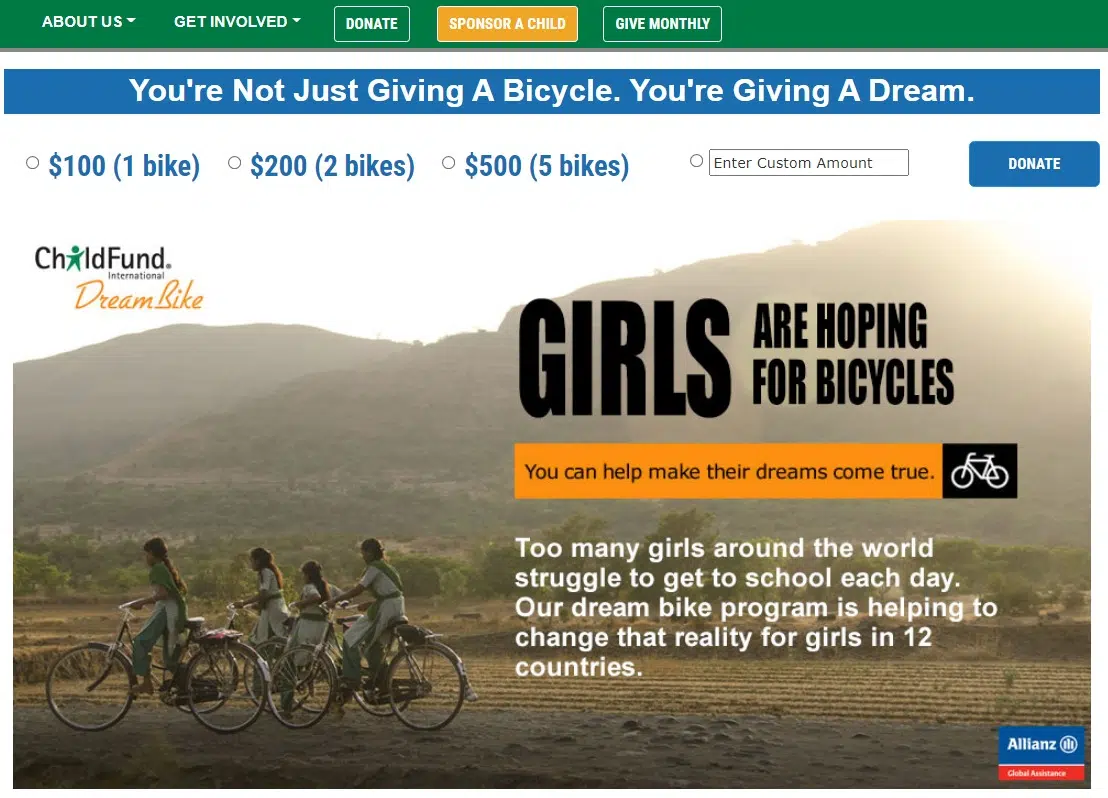
Exodus Cry
For supporters who are unsure of how much to give, the Exodus Cry donate page offers descriptions of different donation levels that correspond to the donation form above. And while the descriptions focus on the three lowest tiers, the form itself sets a default suggested amount that’s right around the middle.
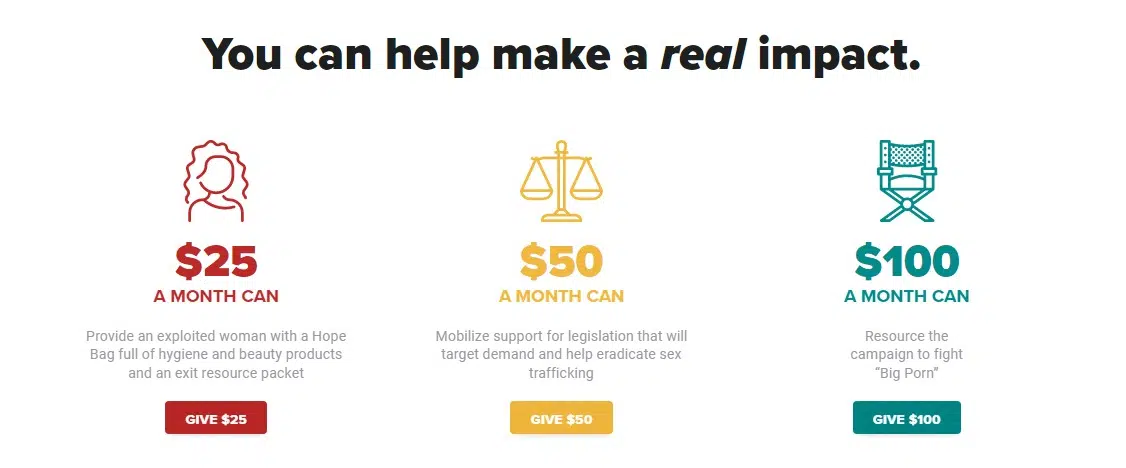
FunkyTown Food Project
We love a site that makes good use of web page sidebars, and the FunkyTown Food Project does just that with giving levels on their online donation page. Visitors easily discover specific levels that will move the mission forward, potentially motivating folks to give to a project or program that interests them.
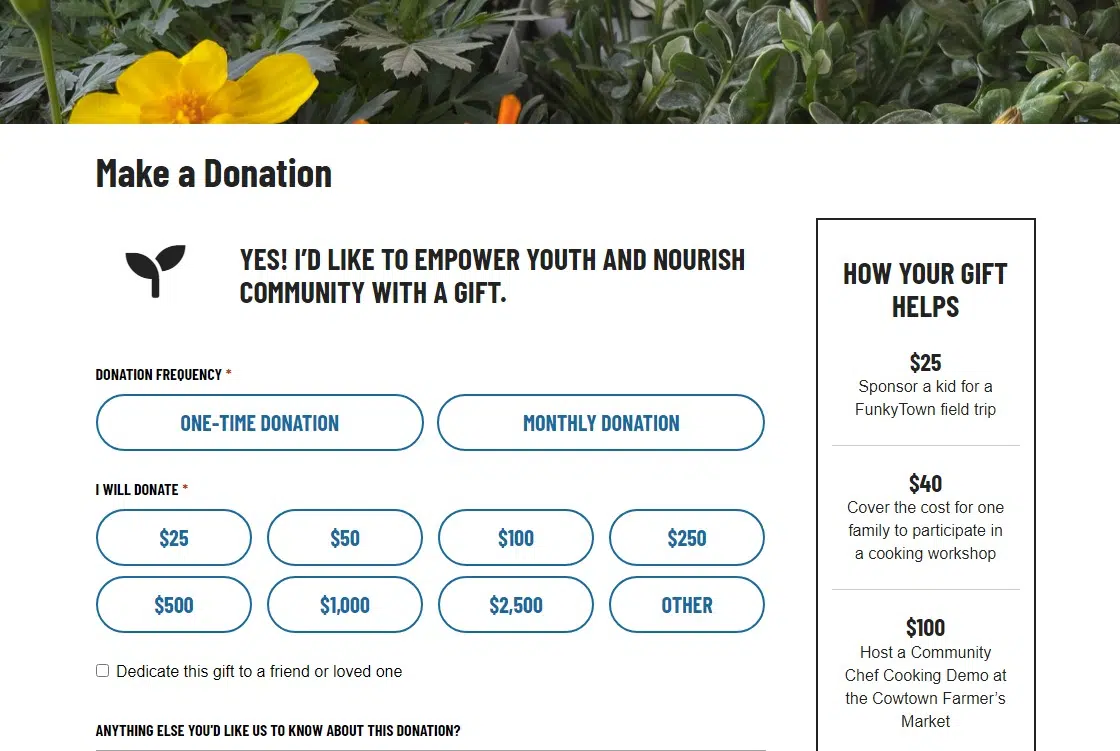
Bird Life International
Similar to the previous example, Bird Life International takes it a step further with the addition of images to accompany their suggested giving levels. Pairing a face (or beak) to different tiers helps people better visualize what their donation means in practice.
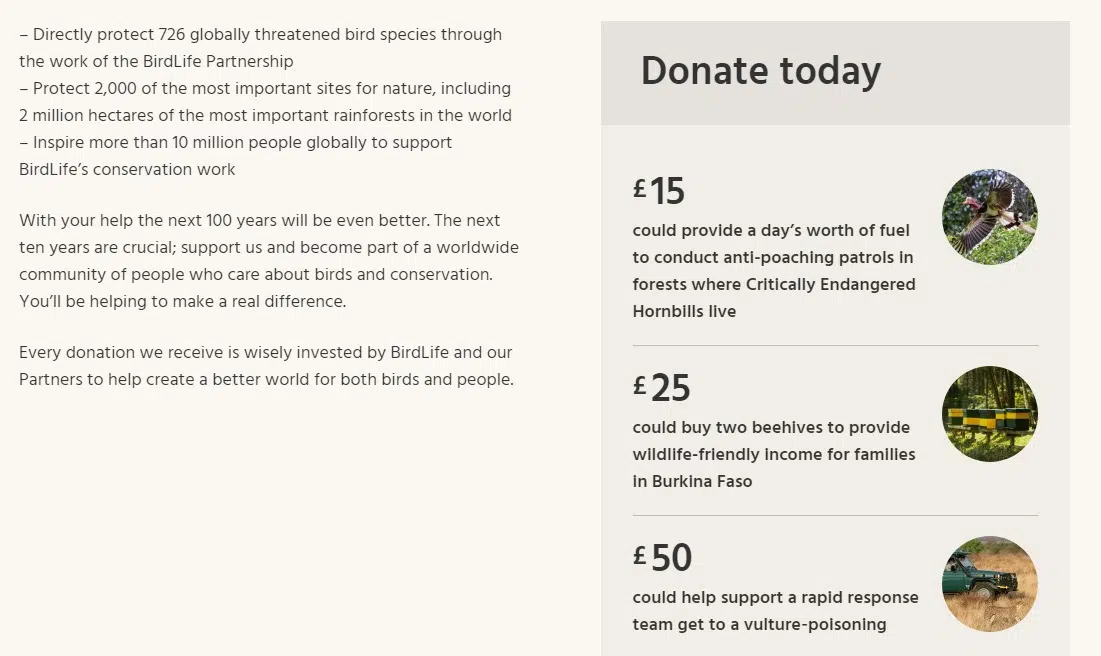
Boys & Girls Clubs – Alaska
Levels that directly correspond to program needs and outcomes are powerful and demonstrate a sense of credibility about what you’re asking for. Boys & Girls Clubs – Alaska combines clean icons with donation amounts that are centered around the heart of their work: giving kids great futures (and hummus).
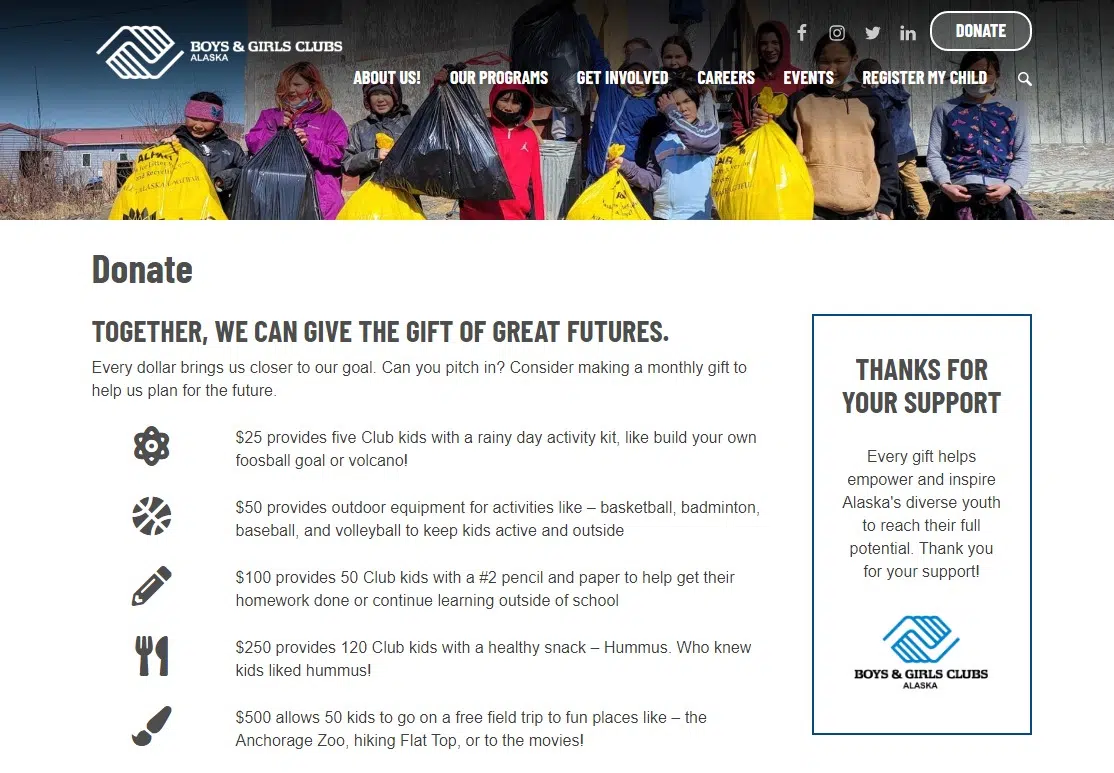
Harvest Manitoba
Now for something completely different! Harvest Manitoba offers a built-in donation calculator that translates different donation levels into pounds of “food, caring and community.” For all of its simplicity, watching the numbers climb up is awfully satisfying without losing the feeling of genuine impact.
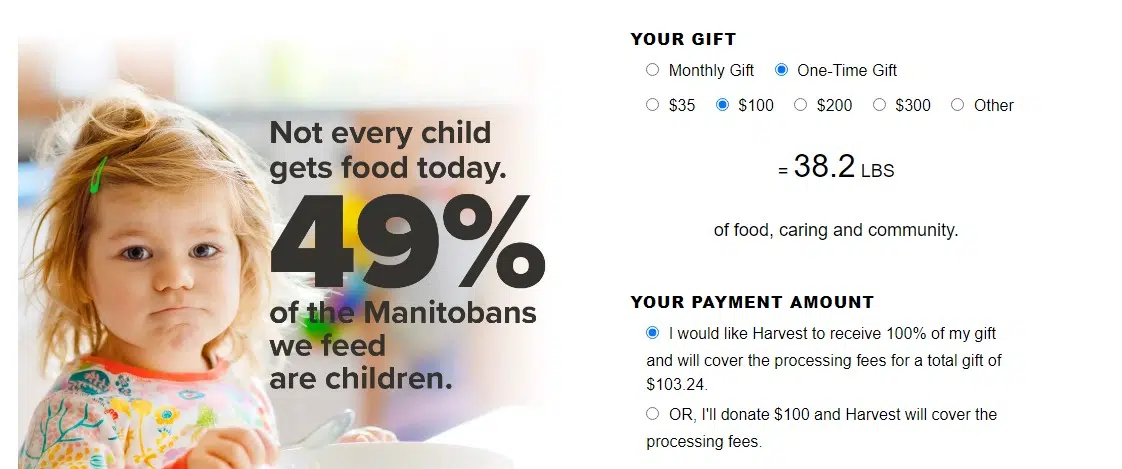
A donation page without giving levels is a bit like website links that say “click here.” Visitors appreciate some extra guidance about where they are going and why. Rather than worrying about seeming pushy with your fundraising message, consider offering levels as guideposts to how they can collaborate with you to create change.
Does your nonprofit use giving levels or donation tiers? Do you have any other examples of websites that use this method to encourage donations? We’d love to hear from you in the comments (and feel free to drop us a link).
Optimize Your Entire Donor Flow
See how your site measures up to best practices for website donations and donor engagement. Use the free Donor Flow Optimizer tool to discover where you’re doing well and which improvements to prioritize.
This post was originally published on 3/16/16 and updated on 9/14/22 with additional tips and examples.
What You Should Do Now
01. Come to Nonprofit Website Office Hours
We cover a new topic every few weeks. Plus get a live answer to any website-related question you're wrestling with.
02. Book a Website Call
Find a time to discuss your nonprofit's website needs. Discover what's worked for other nonprofits like you and see how easy building your new site can be.
03. Start a Free Website Trial
Try our nonprofit website platform for yourself. Instantly get access to every feature to see if it's the right fit for your needs. No credit card required.
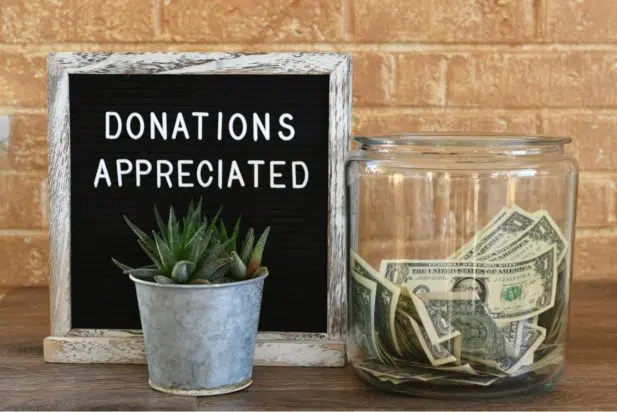
Mium:
I actually stumbled over to this page, but am thinking perhaps you might be a great mix of information for us.
We are a 501c3 Non Profit — We own a 9 building complex in Hopkinton, IA (Delaware Co.)
We are hosting 5 different events on our campus, but we are also in need of major support for companies to donate for our ever ending restoration projects. Currently on our Sponsorship forms, it’s the basic $500/$250/$125 levels, with adversiting as their reward
for donating. In the past 20 persay years, not to much has been done for any fundraising, until this past year, when I and a new President are at the helm… I worked for the Alzheimer’s Association and was able to draw $100,000.00’s of dollars, however finding that resstoration is much different than health issues to draw people — can you help?
Thanks for sharing, Margaret. Are you currently letting donors know some examples of what each level can accomplish? Do larger gifts get donors additional advertising? Try painting a picture of what each gift can accomplish to inspire more and larger gifts to your restoration project. And giving a little special treatment to your top sponsors never hurts! You could also consider updating your online fundraising plan based on trends and best practices. I hope that helps. Happy fundraising!
I too stumbled on this page as it was suggested to offer funding levels. Being a school program, I’m trying to figure out what we can offer at each level. If you’re so inclined, could you check out our site and offer suggestions? You’ll love what we do… http://www.CanineCommandos.org. Thanks so much, Virginia Hamilton
Great question, Virginia. While it’s tough to give specific levels without knowing your budget or the supplies that you need on a regular basis, you might focus lower giving levels around caring for the animals, such as food, shelter and training treats, and then use larger giving levels for bigger lifts like one-on-one training for teachers or the cost of a typical school program. I hope that helps! Let me know if any other questions come up as you’re working through this.
Hello,
Thank you for these great examples!
do you have any suggestions for how to frame it so that the examples don’t sound like specific line items that their gift will be restricted toward?
For example, a $10,000 gift would help 5 kids in our therapy program for a school year. However, it may sound as if that gift is then restricted to that therapy program, when we really mean is that the program is an example of the impact of $10,000.
That’s a good question, Jenny. If you’re using a general donation form on your website, and not a form offering options of specific programs or projects to give toward, there’s typically not any expectations that the gift should be used exclusively for the purpose noted in the giving level. These amounts serve as examples of what that amount can do to move your mission forward, rather than locking you into using it for that purpose only.
However, if you’re worried that your donors may be confused by them, you can add a bit of text before listing the giving levels to explain their purpose. For example, “The following amounts are examples of the impact your donation can have within our community.”